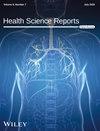The Global Challenge of Antimicrobial Resistance: Mechanisms, Case Studies, and Mitigation Approaches
Abstract
Background and Aims
Antimicrobial resistance (AMR) is projected to cause 10 million deaths annually by 2050 if left unaddressed, posing a severe threat to global health and modern medicine. This review analyzes the molecular and ecological mechanisms underlying antibiotic resistance and evaluates global efforts aimed at containment to identify actionable strategies to mitigate AMR's escalating impact.
Methods
A systematic literature review was performed using databases including PubMed, ScienceDirect, Scopus, Google Scholar, and Web of Science, focusing on peer-reviewed studies from 2000 to 2024. Search terms included “antibiotic resistance,” “resistance mechanisms,” “horizontal gene transfer,” and “AMR epidemiology.” A total of 152 articles were selected based on predefined inclusion criteria relevant to resistance mechanisms, epidemiological data, clinical outcomes, and public health interventions.
Results
Findings underscore three dominant resistance pathways: target site modification, enzymatic degradation (e.g., β-lactamases), and horizontal gene transfer via plasmids and transposons. Notably, resistance to last-resort antibiotics (e.g., colistin, carbapenems) is rising in pathogens such as Klebsiella pneumoniae and Acinetobacter baumannii, with treatment failure rates exceeding 50% in some regions. Surveillance gaps and unregulated antibiotic use, especially in LMICs, further accelerate resistance spread. Only a limited number of new antibiotic classes have been approved since 2010, underscoring the innovation gap.
Conclusion
AMR is a quantifiable, escalating crisis that undermines decades of progress in infectious disease control. Tackling it requires coordinated action: strengthening antimicrobial stewardship, incentivizing antibiotic R&D, integrating environmental and clinical surveillance under One Health frameworks, and implementing global policy reforms. Without prompt action, AMR could surpass cancer in annual mortality by mid-century.


 求助内容:
求助内容: 应助结果提醒方式:
应助结果提醒方式:


